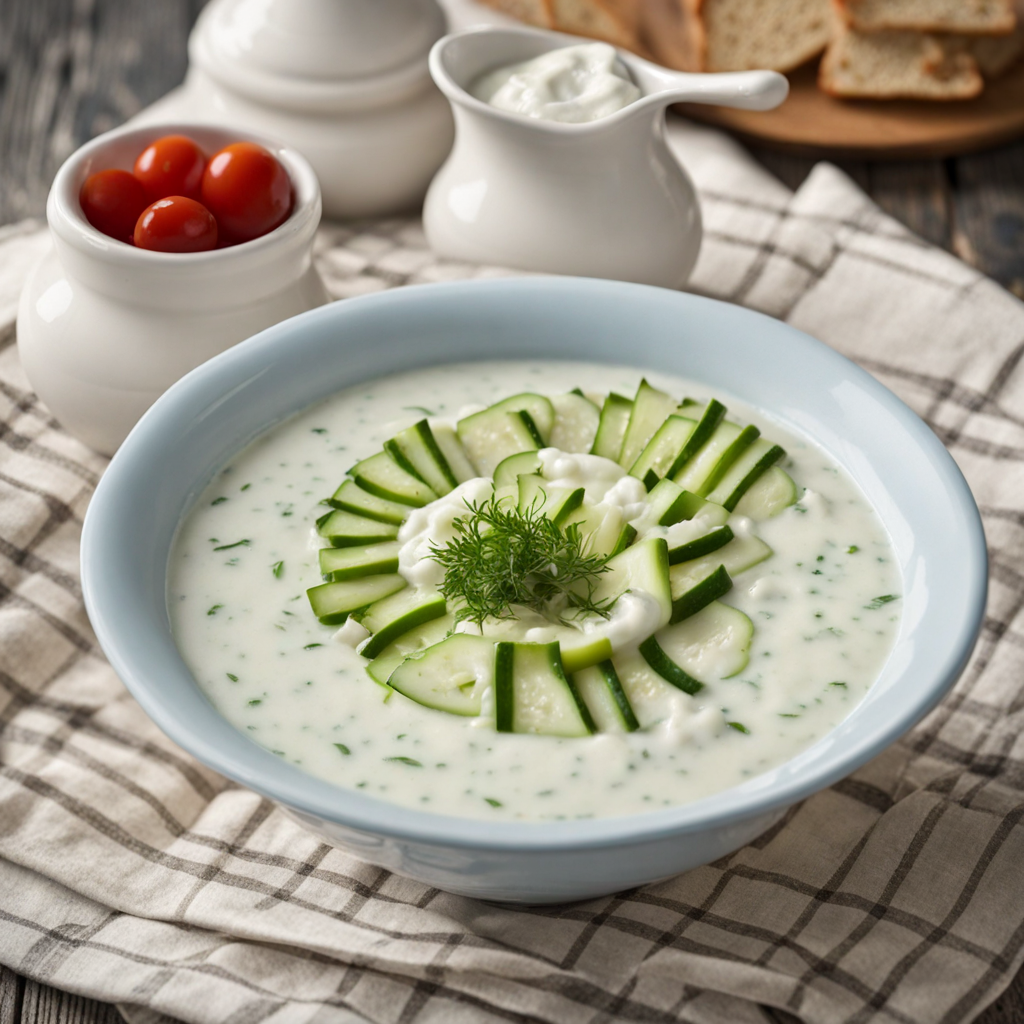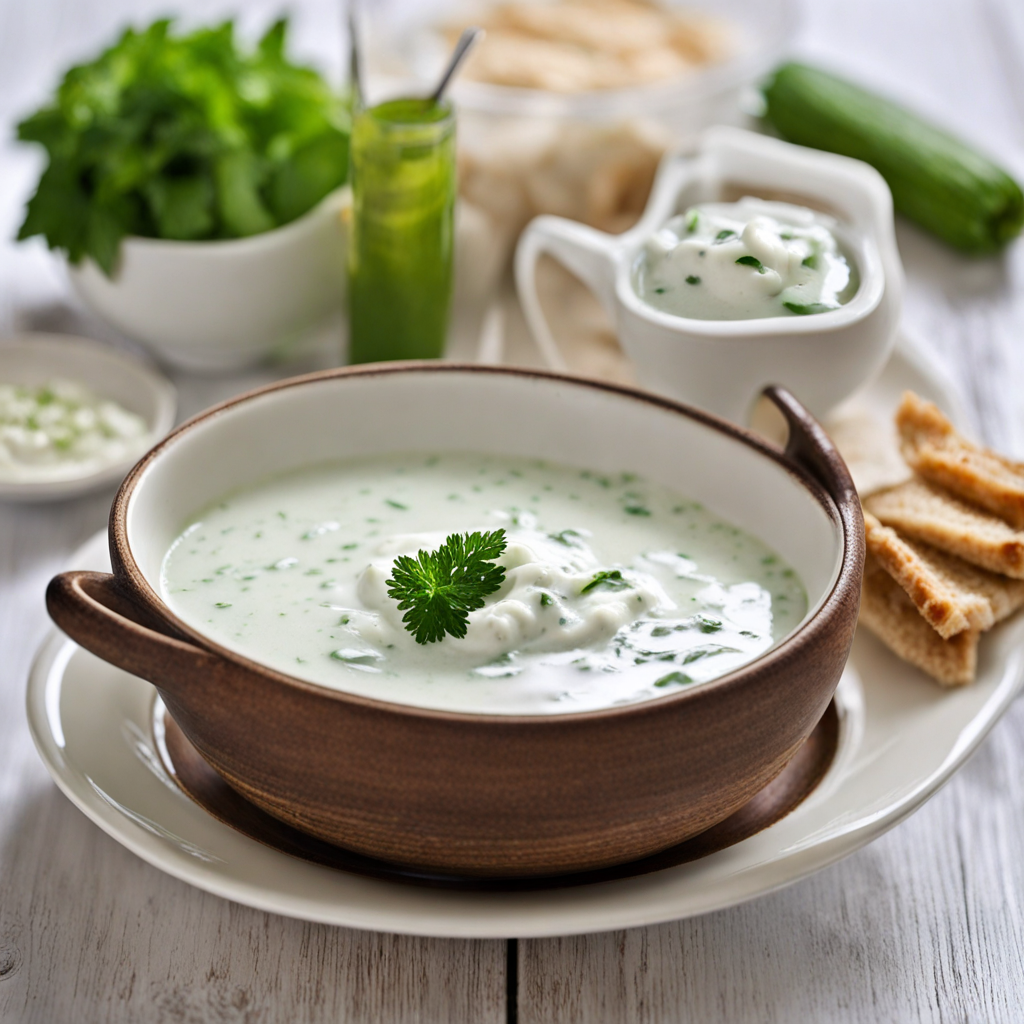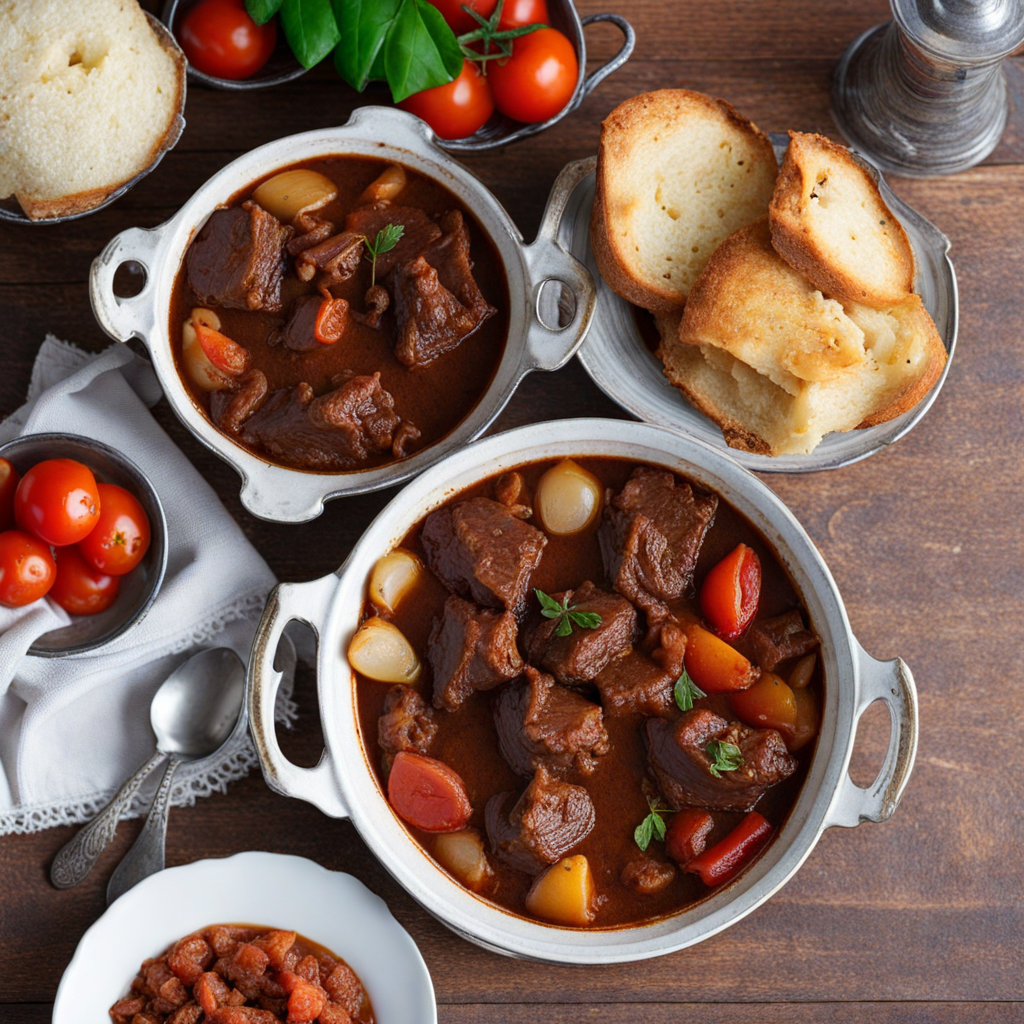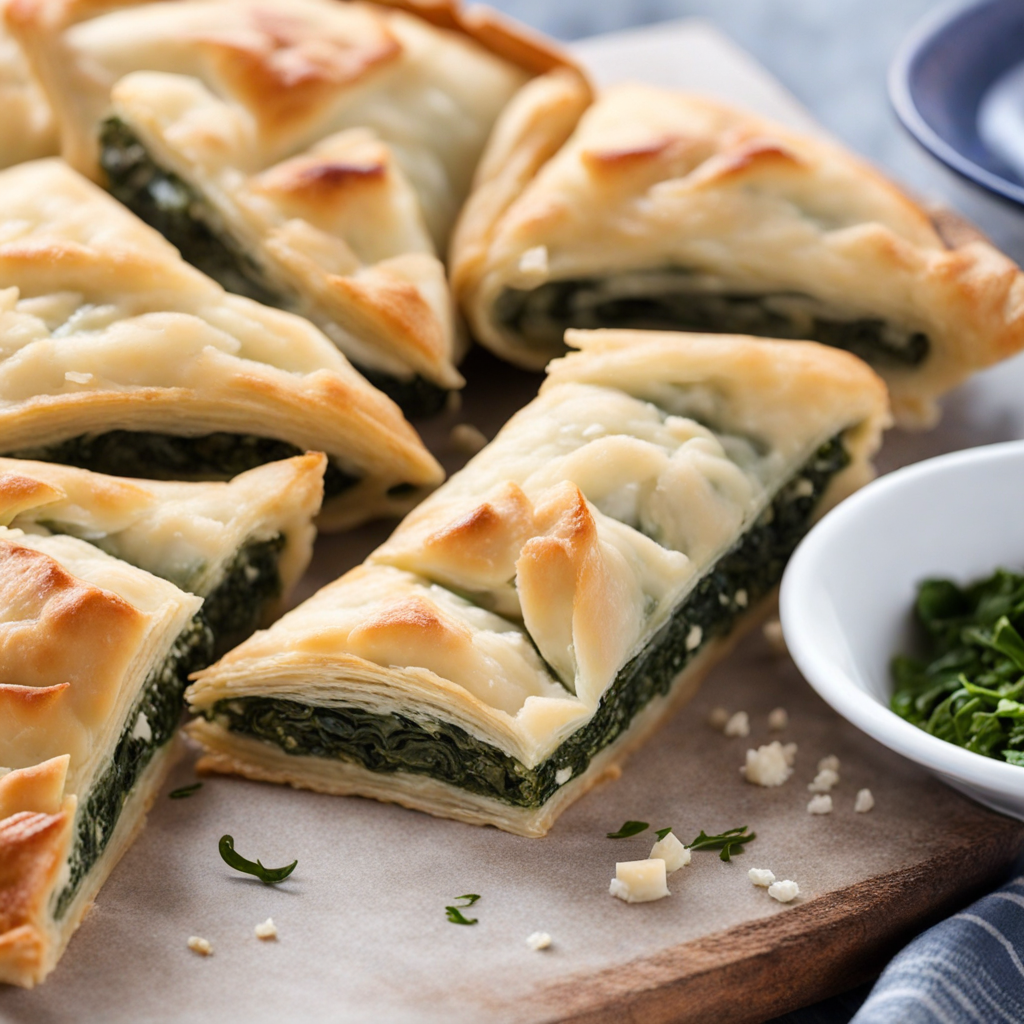Tarator
Tarator is a refreshing Cypriot dish that embodies the essence of Mediterranean flavors, combining simple yet vibrant ingredients to create a delightful cold soup or dip. The base of Tarator is made from creamy yogurt, which provides a smooth and tangy foundation. This is complemented by finely grated cucumber, adding a cool crunch, and minced garlic, which infuses the dish with a bold aroma. The mixture is typically seasoned with a drizzle of olive oil, lemon juice, and a sprinkle of salt, enhancing the natural flavors and providing a bright, zesty profile. The texture of Tarator is wonderfully creamy, making it a perfect accompaniment to a variety of dishes. It is often served as a starter or a side dish, pairing beautifully with grilled meats, pita bread, or fresh vegetables. The yogurt and cucumber combination not only creates a satisfying mouthfeel but also offers a refreshing contrast to spicier or richer foods. The addition of herbs like dill or mint can further elevate its flavor, bringing a hint of earthiness and herbal freshness that is synonymous with Cypriot cuisine. With its cool and invigorating taste, Tarator is particularly popular during the warm months, serving as a light and nutritious option that can be enjoyed any time of the day. Whether you savor it on its own or as part of a mezze platter, Tarator is a delightful way to explore the culinary traditions of Cyprus and experience the harmonious balance of flavors that define this charming island's gastronomy.
How It Became This Dish
The History of Ταρατόρ (Tarator) in Cyprus: A Culinary Journey The vibrant culinary landscape of Cyprus is a tapestry woven from diverse influences, rich traditions, and the island's unique geographical position at the crossroads of civilizations. Among its many beloved dishes, "Ταρατόρ" (Tarator) stands out as a refreshing and flavorful staple that embodies both the island's agricultural bounty and its cultural heritage. This cold, yogurt-based sauce or soup, often enriched with pureed cucumbers, garlic, and olive oil, has a storied history that reflects the island's multicultural society. Origins and Etymology The origins of Tarator can be traced back to the Byzantine period, with influences from both Greek and Middle Eastern cuisines. The word "tarator" itself is believed to be derived from the Arabic word "ṭarṭūr," meaning "to grind," which reflects the method of preparing the dish by grinding or blending ingredients together. While Tarator is particularly significant in Cyprus, similar versions can be found throughout the Eastern Mediterranean and the Middle East, showcasing the interconnectedness of these culinary traditions. In Cyprus, Tarator has been embraced not only as a dish but as an integral part of the local diet. The island's fertile soil and favorable climate make it an ideal place for cultivating cucumbers, garlic, and herbs, all of which are key components of Tarator. The use of yogurt, a staple in Cypriot cuisine, further highlights the importance of dairy in the local diet, influenced by both Greek traditions and the island's long history of agriculture. Cultural Significance Tarator is more than just a dish; it embodies the cultural ethos of Cyprus. It is often served as a meze, a collection of small dishes that encourage sharing and sociability—a hallmark of Cypriot hospitality. Meze is a central aspect of Cypriot dining culture, where friends and family gather around tables laden with a variety of flavors, textures, and colors. Tarator, with its refreshing and cooling properties, complements the often spicy and savory dishes found in meze platters, making it an essential component of communal meals. Moreover, Tarator has become synonymous with summer gatherings. Its cooling effect makes it particularly popular during the hot months, providing relief from the sweltering heat. It is frequently served alongside grilled meats, fish, and vegetables, enhancing the overall dining experience. The dish is also popular during special occasions and celebrations, signifying its deep-rooted place in Cypriot culinary customs. Ingredients and Preparation The beauty of Tarator lies in its simplicity and the quality of its ingredients. Traditional recipes typically include thick yogurt, grated cucumbers, crushed garlic, olive oil, and a sprinkle of salt. Some variations may incorporate fresh herbs like dill or mint, while others might add a dash of vinegar or lemon juice for acidity. The ingredients are usually blended or mixed until smooth, resulting in a creamy, refreshing sauce that can be served as a dip or soup. One of the key elements that differentiate Cypriot Tarator from its counterparts in other regions is the use of strained yogurt, known as "straggisto." This thick yogurt contributes to the dish’s rich texture and distinctive flavor. The preparation of the yogurt itself is an art form in Cypriot households, often made from the milk of local sheep or goats, reflecting the island's pastoral traditions. Evolution and Variations As Cyprus has evolved over the centuries, so too has Tarator. Following the Ottoman Empire's expansion into the region, various culinary influences merged, leading to adaptations of traditional recipes. During the Ottoman period, the introduction of new spices and preparation techniques enriched the Cypriot palate. Tarator began to appear in different forms, utilizing local ingredients while drawing inspiration from the broader Mediterranean and Middle Eastern cuisines. In contemporary Cypriot kitchens, Tarator has retained its traditional roots while embracing modern culinary trends. Chefs and home cooks alike experiment with new flavors and presentations, incorporating elements such as roasted nuts, smoked paprika, or even avocados to create a more complex flavor profile. The dish's adaptability has allowed it to remain relevant in a rapidly changing food culture, appealing to both traditionalists and adventurous eaters. Tarator in the Modern Culinary Landscape Today, Tarator is celebrated not only in homes but also in restaurants across Cyprus, where chefs take pride in crafting their unique versions of the dish. It has also gained popularity beyond the island, with Cypriot restaurants worldwide featuring it on their menus, introducing a new audience to this delightful culinary tradition. In addition to its presence in meze platters, Tarator has found its way into various culinary contexts. It is often used as a dressing for salads, a sauce for grilled meats, or even as a dip for pita bread. The dish's versatility is a testament to its enduring appeal and its ability to adapt to modern tastes. Conclusion The journey of Tarator in Cyprus is a reflection of the island's rich history and cultural heritage. From its roots in Byzantine and Arabic influence to its place in modern Cypriot kitchens, Tarator serves as a flavorful reminder of the interconnectedness of Mediterranean food cultures. Its simplicity, adaptability, and refreshing taste make it a beloved dish that transcends generations. As we savor a bowl of Tarator, we partake in a culinary tradition that has been shaped by the land, the people, and the historical currents that have flowed through Cyprus. Whether enjoyed at a festive gathering, a casual meal with family, or a fine dining experience, Tarator encapsulates the spirit of Cypriot hospitality and the island's rich gastronomic heritage, making it a true treasure of Cypriot cuisine.
You may like
Discover local flavors from Cyprus







